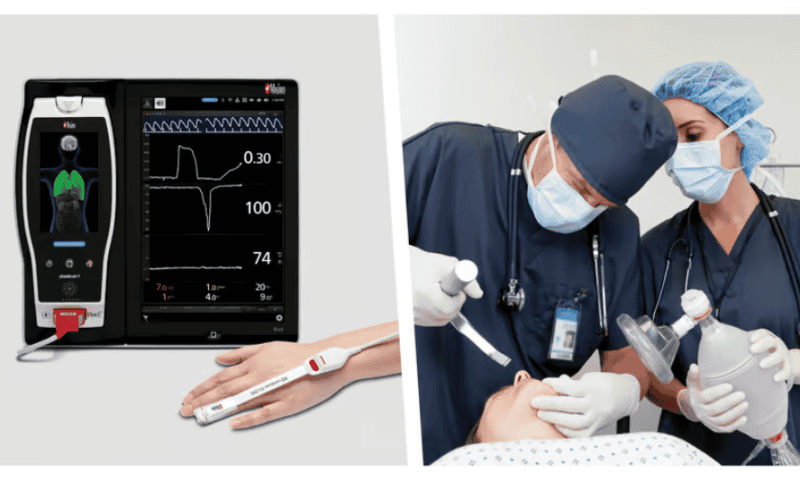When a patient is receiving supplemental oxygen during surgery, there’s a risk that they’ll develop hyperoxia, where their arterial blood becomes oxygenated above normal levels, potentially leading to oxygen poisoning or pulmonary tissue damage.
Traditionally, the only way to monitor for hyperoxia in these patients has been by drawing a blood sample and testing it for partial pressure of oxygen, or PaO2, a method that doesn’t allow for continuous monitoring of changes. Masimo, however, is breaking with that tradition: The medtech giant has scored de novo clearance from the FDA to add a continuous, noninvasive oxygenation monitoring tool to its multiparameter pulse oximetry platform.
The new parameter has been available in Europe for a couple of years, since Masimo earned CE mark clearance in 2021 for a patient monitoring device with 12 sensors that included one to calculate what the company has dubbed oxygen reserve index (ORi). With the de novo nod, it’s now the only continuous, noninvasive tool cleared in the U.S. to watch for hyperoxia in adult patients receiving supplemental oxygen during surgery, according to Masimo’s Friday announcement.
The ORi sensor bulks up Masimo’s pulse oximetry technology, since oxygen saturation levels can’t be expressed beyond 100%. It may also detect changes in oxygenation that don’t show up on SpO2 readings: According to Masimo, a 2016 study of ORi found that a decrease in the index “may provide advance indication of falling PaO2 when SpO2 is still >98%.”
In Masimo’s release, Jesse Ehrenfeld, M.D., who’s an adviser to the company, president of the American Medical Association and a practicing anesthesiologist, described a variety of situations where the oxygenation-monitoring tool could be useful in clinical practice.
“During patient pre-oxygenation, I often find myself unsure of the adequacy of pre-oxygenation, especially in a patient with a significant cardiopulmonary comorbidity or a patient with diminished oxygen reserve capacity. ORi would solve this problem by giving an easy-to-understand parameter that provides visibility to how oxygenation is changing during the pre-oxygenation process,” he said.
“Additionally, I often find that during the management of a difficult airway, it is never quite clear when to stop, re-establish mask ventilation, and allow the patient to recover. Again, ORi would be very helpful in addressing this issue as it can track the trajectory of the patient’s oxygenation status,” Ehrenfeld continued.
Stateside, the ORi sensor will be available in several of Masimo’s RD Rainbow pulse oximetry devices: a newly launched one that features four LED sensors and can calculate both oxygen saturation and ORi along with an eight-sensor device that adds a few other parameters, including one that tracks changes in total hemoglobin.
However, the aforementioned 12-sensor Rainbow monitor still isn’t available in the U.S., since Masimo’s fractional oxygen saturation index still has yet to secure FDA clearance.

